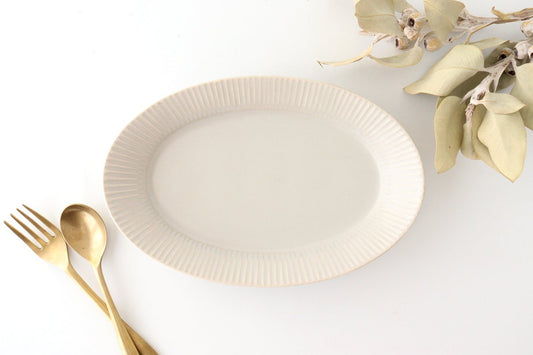商品系列: Plates
What Are Japanese Plates?
Japanese plates are an essential part of traditional Japanese tableware, designed to enhance the presentation and appeal of dishes. These plates come in various shapes, designs, and materials, reflecting Japan's rich food culture and aesthetic sensibilities. From traditional designs to modern interpretations, Japanese plates offer a wide range of options.
-
White makeup scraping plate Pottery Mino ware
定價 $22.67 USD定價單價 / 每 -
Hexagonal long plate, semi-porcelain, flower pattern, Arita ware
定價 $46.67 USD定價單價 / 每 -
Oval platter black porcelain Kikuhana Mino ware
定價 $32.00 USD定價單價 / 每 -
Round plate 22.5cm/5.9in Black porcelain Kikuhana Mino ware
定價 $38.67 USD定價單價 / 每 -
Oval platter, powdered porcelain, Kikuhana, Mino ware
定價 $32.00 USD定價單價 / 每 -
Round plate 22.5cm/5.9in Powdered porcelain Kikuhana Mino ware
定價 $38.67 USD定價單價 / 每 -
Tutti Plate L Clear Glass Sghr Sugahara
定價 $80.00 USD定價單價 / 每 -
Oval Medium Plate Oribe Shiratsubaki Pottery Kurochin Kiln Mino Ware
定價 $38.67 USD定價單價 / 每 -
Chrysanthemum pattern plate large blue porcelain Fuchiasobi Hasami ware
定價 $45.33 USD定價單價 / 每 -
Round plate 21cm ivory pottery Sucre Hasami ware
定價 $41.33 USD定價單價 / 每 -
24cm/9.4in Dish Porcelain Potted Peony Arita Ware
定價 $64.00 USD定價單價 / 每 -
Brunch Board Sakura Yososawa Wood Crafts/KITO
定價 $102.67 USD定價單價 / 每 -
24cm/9.4in Plate Ceramic NEZIRI Plum Hasami Ware
定價 $54.67 USD定價單價 / 每 -
Plate large green pottery Saheigama Shigaraki ware
定價 $56.00 USD定價單價 / 每 -
Plate large white pottery Saheigama Shigaraki ware
定價 $56.00 USD定價單價 / 每 -
Oval plate medium gray pottery Ozenre kiln
定價 $44.00 USD定價單價 / 每 -
21cm/8.3in Rim Plate Oribe Porcelain Laurel Mino Ware
定價 $25.33 USD定價單價 / 每 -
21cm/8.3in Rim Plate Blue Porcelain Laurel Mino Ware
定價 $25.33 USD定價單價 / 每 -
21cm/8.3in Rim Plate White Porcelain Laurel Mino Ware
定價 $25.33 USD定價單價 / 每 -
21cm/8.3in plate Nanameshinogi pottery tomaru Shigaraki ware
定價 $65.33 USD定價單價 / 每 -
21cm/8.3in plate rosemary pottery tomaru Shigaraki ware
定價 $65.33 USD定價單價 / 每 -
21cm/8.3in plate star pottery tomaru Shigaraki ware
定價 $65.33 USD定價單價 / 每 -
Oribe hexagon 24cm/9.4in flat plate pottery Kitagama Kasen Hiroshige Kato Seto ware
定價 $44.00 USD定價單價 / 每 -
Round plate silver green porcelain Cuore Mino ware
定價 $34.67 USD定價單價 / 每 -
Octagonal plate 21cm/8.3in Dyed flower porcelain Hasami ware
定價 $52.00 USD定價單價 / 每 -
Rim plate ivory porcelain ORLO Mino ware
定價 $41.33 USD定價單價 / 每 -
Pasta plate ivory porcelain ORLO Mino ware
定價 $52.00 USD定價單價 / 每 -
Oval plate 23cm ivory porcelain ORLO Mino ware
定價 $37.33 USD定價單價 / 每 -
Oval plate 23cm ivory porcelain fruit Mino ware
定價 $28.00 USD定價單價 / 每 -
Round plate 24cm ivory porcelain fruit Mino ware
定價 $34.67 USD定價單價 / 每 -
21cm/8.3in Plate Mimosa Pottery Hasamiyaki
定價 $44.00 USD定價單價 / 每 -
[Mizuki x Uchiru collaboration] 21cm rim deep dish line porcelain Hasami ware
定價 $44.00 USD定價單價 / 每 -
Plate large merry-go-round porcelain Hasami ware
定價 $38.67 USD定價單價 / 每 -
Long plate vanilla porcelain rondo Hasami ware
定價 $37.33 USD定價單價 / 每 -
Long plate camel porcelain rondo Hasami ware
定價 $37.33 USD定價單價 / 每 -
2.4 plate round row pottery blue indigo Hasami ware
定價 $60.00 USD定價單價 / 每 -
Flat plate large yellow pottery Ozenre kiln
定價 $58.67 USD定價單價 / 每 -
Flat plate medium white pottery Ozenre kiln
定價 $44.00 USD定價單價 / 每 -
Flat plate large white pottery Ozenre kiln
定價 $58.67 USD定價單價 / 每 -
Shinogi Oval Plate L Sherbet Gray Porcelain Koyo Kiln Arita Ware
定價 $49.33 USD定價單價 / 每 -
Round plate large chintz arabesque porcelain Arita ware
定價 $54.67 USD定價單價 / 每 -
Oval plate medium white pottery Ozenre kiln
定價 $44.00 USD定價單價 / 每 -
Oval plate medium Azuki pottery Ozenre kiln
定價 $44.00 USD定價單價 / 每 -
Oval plate medium yellow pottery Ozenre kiln
定價 $44.00 USD定價單價 / 每 -
Round plate large black polka dot porcelain Arita ware
定價 $48.00 USD定價單價 / 每
Serving Japanese CuisineFeatures of Japanese Plates
Diverse Designs: Japanese plates feature a wide array of designs, including floral patterns, geometric shapes, and animal motifs. These designs add color and personality to the dining table. Seasonal designs and traditional patterns reflect the beauty of Japan's four seasons and landscapes, enhancing the visual appeal of the food and making the dining experience more enjoyable.
Various Shapes: Japanese plates come in many shapes, including round, square, rectangular, and oval. The variety allows for different types of food presentation, from sushi and sashimi on long plates to salads and stews in deep bowls. The use of various plate sizes and shapes adds a touch of authenticity to Japanese dining.
High-Quality Materials: Made from high-quality materials such as ceramic, porcelain, glass, and wood, Japanese plates combine natural beauty with durability. Notable types like Arita ware and Kutani ware are renowned for their exquisite designs and high standards of craftsmanship. These materials ensure the plates are both functional and visually appealing, suitable for everyday use and special occasions.
Techniques and Precision
Japanese plates are crafted by skilled artisans who meticulously create each piece using traditional techniques passed down through generations. For example, Arita ware, known for its white base and blue underglaze, has been produced since the 17th century using time-honored methods. Kutani ware, with its vibrant colors and bold designs, requires precise hand-painting skills.
The plates are made with remarkable precision, from thin and lightweight porcelain plates to thick and robust ceramic ones. This precision ensures not only the aesthetic beauty of the plates but also their practicality and ease of use.
Differences from Overseas Plates
Design: Japanese plates are characterized by intricate designs inspired by nature, seasons, and traditional motifs. In contrast, overseas plates often favor simpler, more functional designs. The delicate and detailed patterns on Japanese plates highlight the artistry and cultural significance embedded in each piece.
Techniques: Japanese plates are often decorated with elaborate hand-painted details and gold or silver accents, showcasing the artisans' skills. This hand-crafted approach results in unique variations in each piece, giving them a distinct character. On the other hand, many overseas plates are mass-produced using machines, ensuring uniformity but lacking the unique touch of hand-crafted items.
Uses of Japanese Plates
Serving Japanese Cuisine: Japanese plates are perfect for presenting sushi, sashimi, tempura, and other traditional dishes. Their beautiful designs enhance the appearance of the food, making it more appealing.
Serving Western Dishes and Desserts: Japanese plates are also suitable for serving Western dishes and desserts. The fusion of different culinary cultures can create new and exciting dining experiences.
As Serving Platters: During parties and gatherings, Japanese plates can be used as serving platters for cheese, fruits, canapés, and other appetizers, adding elegance and style to the table.
As Interior Decor: The beautiful designs of Japanese plates make them ideal for use as interior decor. They can be displayed as decorative plates, adding a touch of artistry to the home.
Conclusion
Japanese plates are renowned for their beauty and functionality, making them suitable for both everyday use and special occasions. The fusion of traditional techniques and modern designs breathes new life into these plates, bringing a fresh dynamic to the dining table. Enjoy your meals even more with the elegance of Japanese plates.








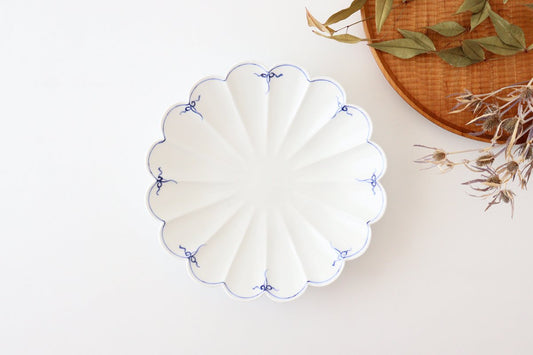
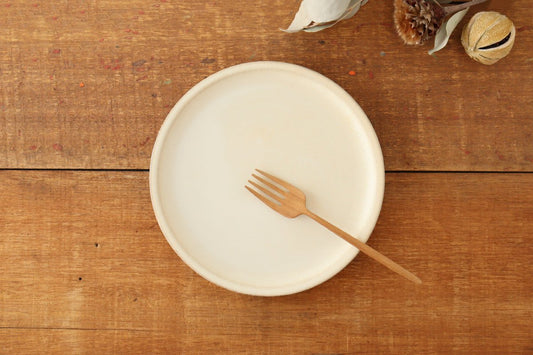


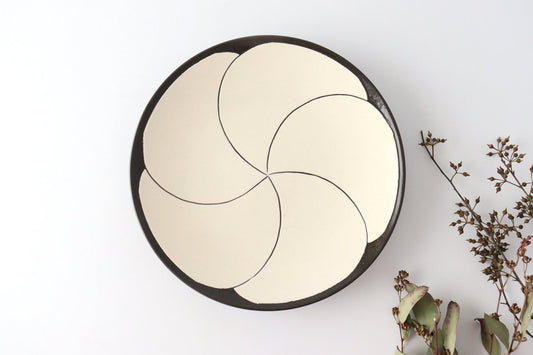






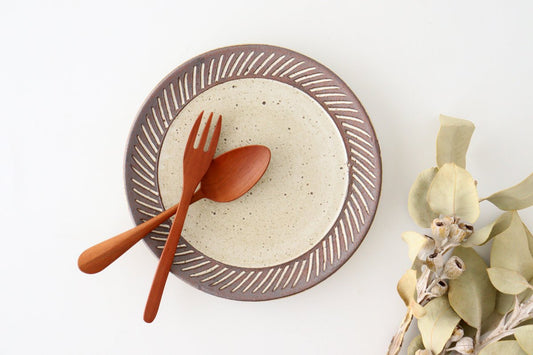











![[Mizuki x Uchiru collaboration] 21cm rim deep plate yellow porcelain Hasami ware](http://utsuwabi.com/cdn/shop/files/166446332.jpg?v=1706175203&width=533)
![[Mizuki x Uchiru collaboration] 21cm rim deep dish line porcelain Hasami ware](http://utsuwabi.com/cdn/shop/files/165786554.jpg?v=1706175196&width=533)



![[Uchiru Original] Wreath Plate L Flowercrest Vines Porcelain Koyo Kiln Arita Ware](http://utsuwabi.com/cdn/shop/files/164388412.jpg?v=1706175170&width=533)
![[Uchiru Original] Wreath Plate L Flowercrest Small Flower Porcelain Koyo Kiln Arita Ware](http://utsuwabi.com/cdn/shop/files/164371906.jpg?v=1706175163&width=533)




